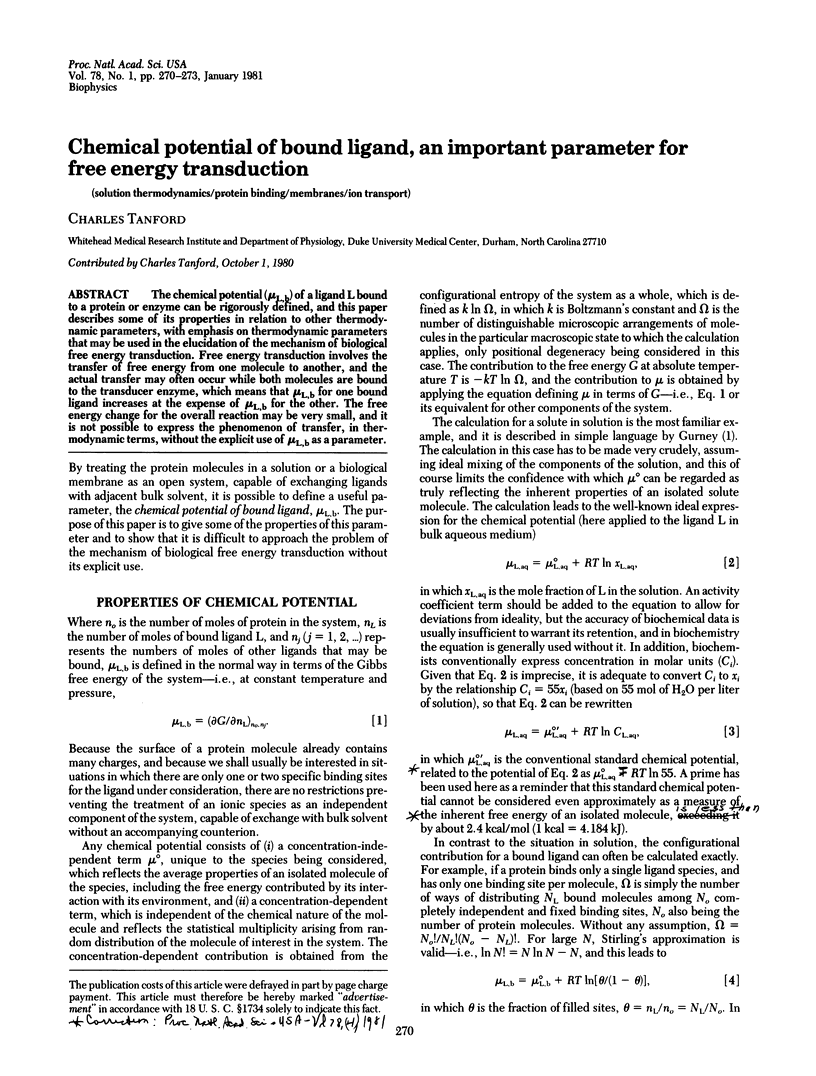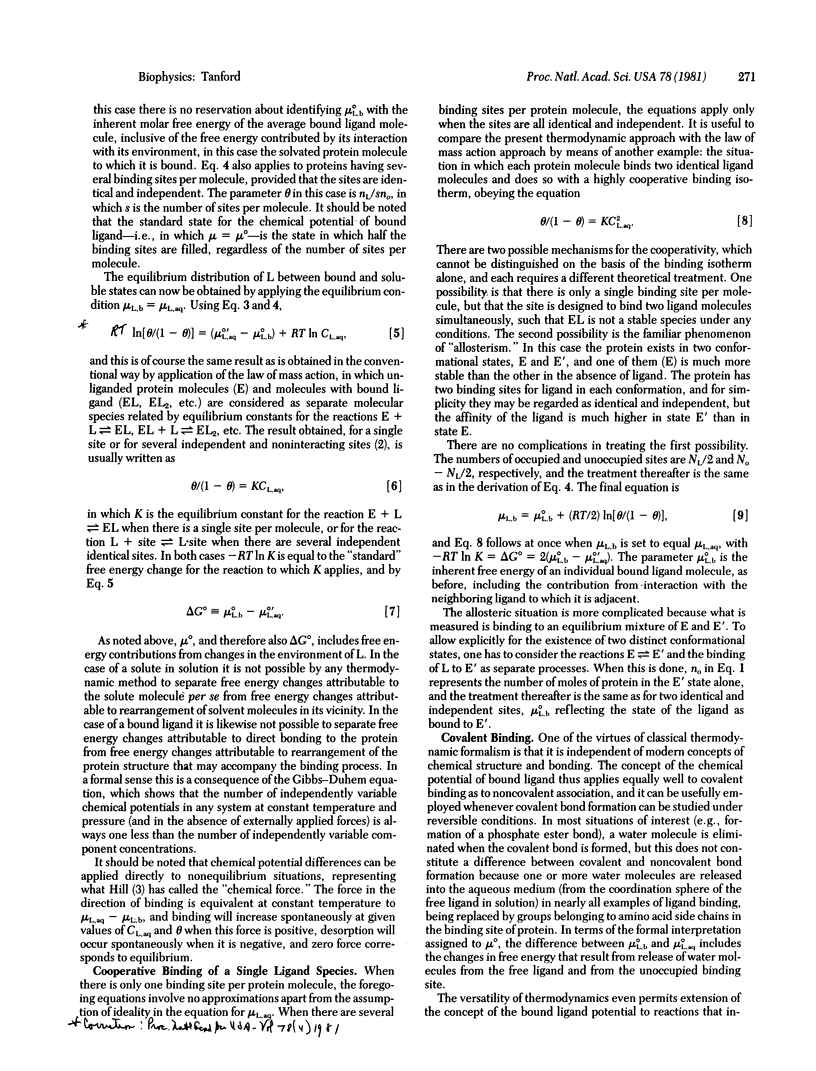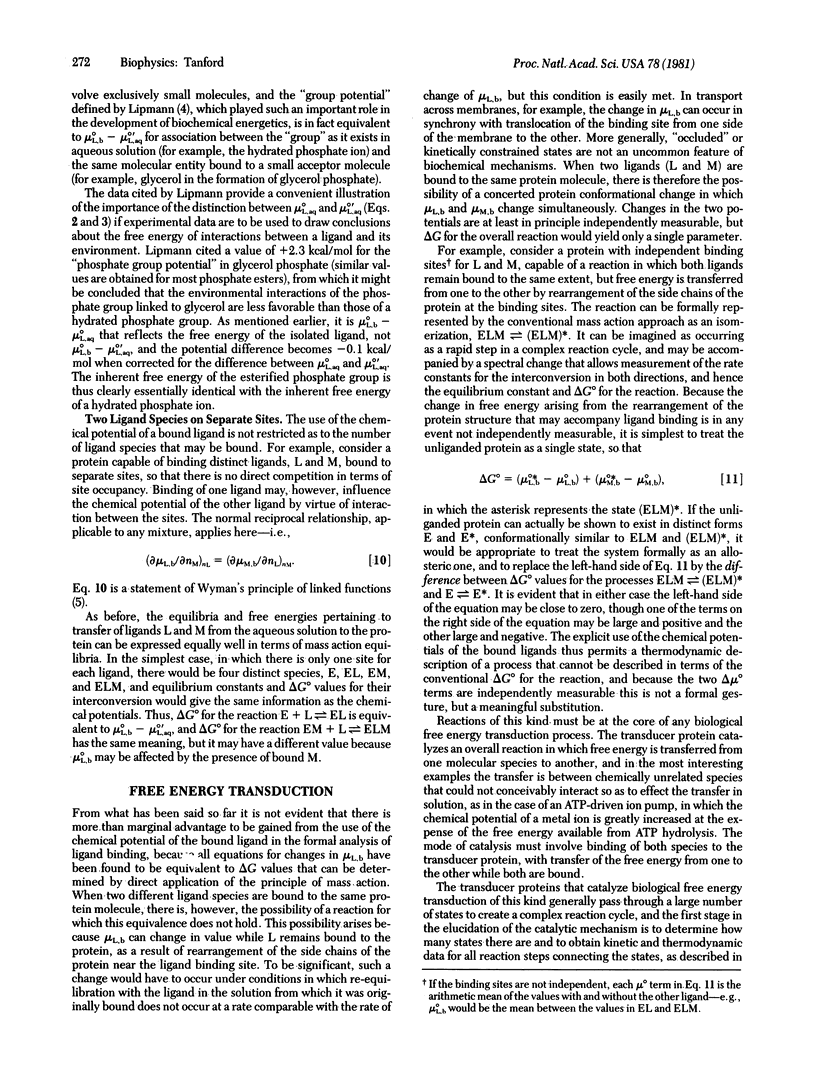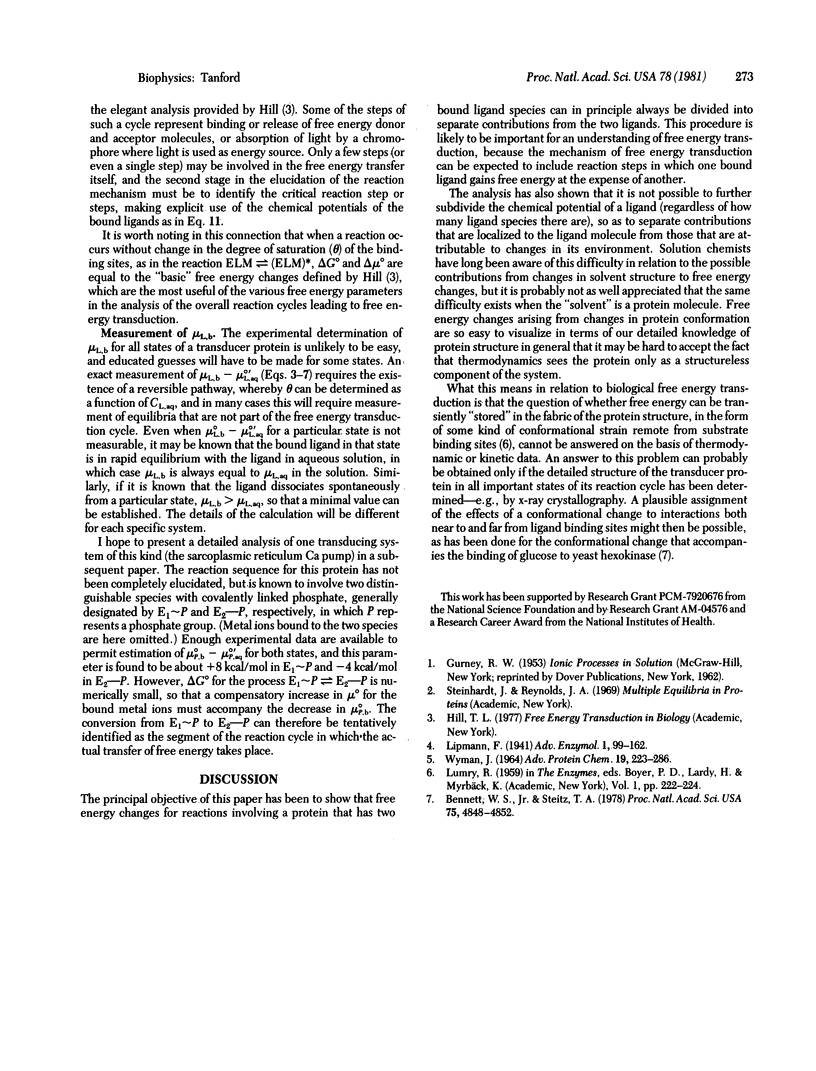Abstract
The chemical potential (μL,b) of a ligand L bound to a protein or enzyme can be rigorously defined, and this paper describes some of its properties in relation to other thermodynamic parameters, with emphasis on thermodynamic parameters that may be used in the elucidation of the mechanism of biological free energy transduction. Free energy transduction involves the transfer of free energy from one molecule to another, and the actual transfer may often occur while both molecules are bound to the transducer enzyme, which means that μL,b for one bound ligand increases at the expense of μL,b for the other. The free energy change for the overall reaction may be very small, and it is not possible to express the phenomenon of transfer, in thermodynamic terms, without the explicit use of μL,b as a parameter.
Keywords: solution thermodynamics, protein binding, membranes, ion transport
Full text
PDF



Selected References
These references are in PubMed. This may not be the complete list of references from this article.
- Bennett W. S., Jr, Steitz T. A. Glucose-induced conformational change in yeast hexokinase. Proc Natl Acad Sci U S A. 1978 Oct;75(10):4848–4852. doi: 10.1073/pnas.75.10.4848. [DOI] [PMC free article] [PubMed] [Google Scholar]
- WYMAN J., Jr LINKED FUNCTIONS AND RECIPROCAL EFFECTS IN HEMOGLOBIN: A SECOND LOOK. Adv Protein Chem. 1964;19:223–286. doi: 10.1016/s0065-3233(08)60190-4. [DOI] [PubMed] [Google Scholar]


